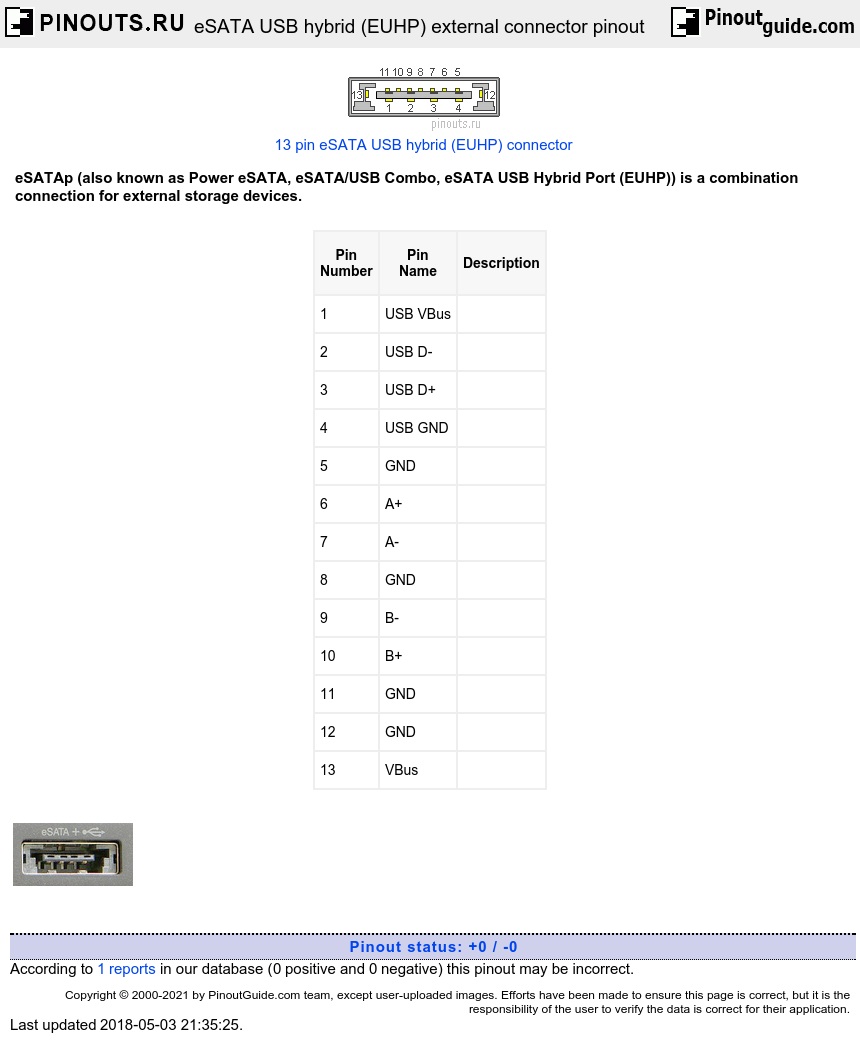eSATAp details
An eSATA or USB device can be plugged into an eSATAp port. The socket has keyed cutouts for both types of device to ensure that a connector can only be plugged in the right way.
| Pin Number |
Pin Name |
Description |
|---|---|---|
| 1 | USB VBus | |
| 2 | USB D- | |
| 3 | USB D+ | |
| 4 | USB GND | |
| 5 | GND | |
| 6 | A+ | |
| 7 | A- | |
| 8 | GND | |
| 9 | B- | |
| 10 | B+ | |
| 11 | GND | |
| 12 | GND | |
| 13 | VBus |
eSATAp connectors
There are two versions of this port. Most laptop computers do not have +12V power available, and have an eSATAp port which provides only +5 V. Desktop computers, with +12V available, have a port with two additional pads, placed against the plug's horns, which provide +12 V. Some manufacturers refer to these ports as eSATApd, where d stands for dual voltage. Some devices, such as 2.5-inch drives, can operate off the +5V supplied by laptop eSATAp ports. Others, such as 3.5-inch drives, also require +12V; they can be powered from a desktop eSATAp port, but require an external +12V power supply if used with a laptop computer. This can lead to confusion if users are not aware of the distinction.



 correct
correct incorrect
incorrect